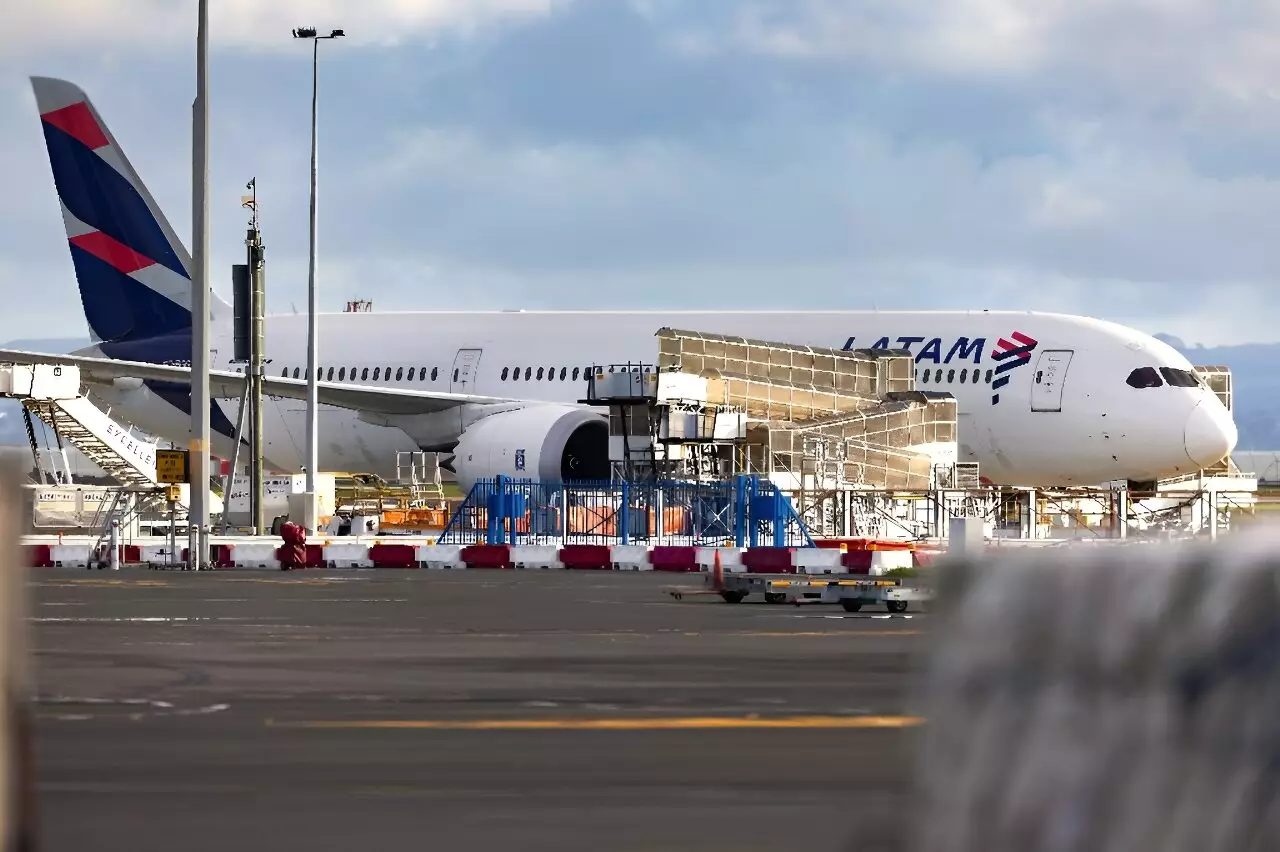Boeing issued a warning to airlines operating its 787 Dreamliner model, urging them to inspect certain switches in the cockpit. This warning came after a terrifying incident involving a New Zealand-bound LATAM plane, which experienced a sudden drop mid-flight, resulting in injuries to dozens of passengers. According to Boeing, the investigation into Flight LA800 is ongoing, and they are deferring to the investigation authorities for any potential findings. As a precautionary measure, Boeing reminded 787 operators of a service bulletin issued in 2017 that included instructions for inspecting and maintaining switches on flight deck seats.
The Chilean airline LATAM was en route from Sydney, Australia to Auckland, New Zealand when the unexpected plunge occurred. Passengers on board were thrown out of their seats, with some even hitting the cabin roof. In total, fifty people were injured, with 13 requiring hospitalization. While LATAM initially attributed the incident to a “technical event,” reports from the Wall Street Journal suggested otherwise. According to US industry sources, the incident was allegedly caused by the inadvertent activation of a switch on the pilot’s seat by a flight attendant. This action led to a sharp nosedive, endangering the safety of everyone on board.
Both LATAM and Boeing have declined to provide further comments on the matter, citing the ongoing investigation. However, the US Federal Aviation Administration (FAA) has taken action by convening a Corrective Action Review Board (CARB) comprised of safety experts. The board’s primary goal is to investigate the incident and provide feedback to Boeing. This process will involve a thorough review of the 2017 service bulletin related to the switches in the pilot seats. As a result of this incident and other recent safety issues, Boeing’s share price has plummeted by 25 percent since the beginning of the year.
Boeing has faced a series of safety-related challenges in recent years, starting with the fatal crashes of 737 MAX planes in 2018 and 2019, which claimed the lives of over 350 individuals. Additionally, the company encountered a near-catastrophic incident in January when a fuselage panel on a Boeing 737 MAX 9 Alaska Airlines jet detached mid-flight. More recently, a Boeing 777 jetliner bound for Japan had to make an emergency landing shortly after takeoff from San Francisco due to a wheel detachment, causing damage to several vehicles in an airport parking lot. In response to these incidents, US regulators have given Boeing a 90-day deadline to address quality control issues, emphasizing the need for “real and profound improvements.”
The recent incident involving the LATAM plane serves as a stark reminder of the importance of rigorous safety measures in the aviation industry. It highlights the critical role that regular inspections and maintenance play in ensuring the well-being of passengers and crew members. As Boeing and other aviation companies strive to enhance their safety protocols, it is imperative that they prioritize transparency, accountability, and continuous improvement to prevent future tragedies.


Leave a Reply